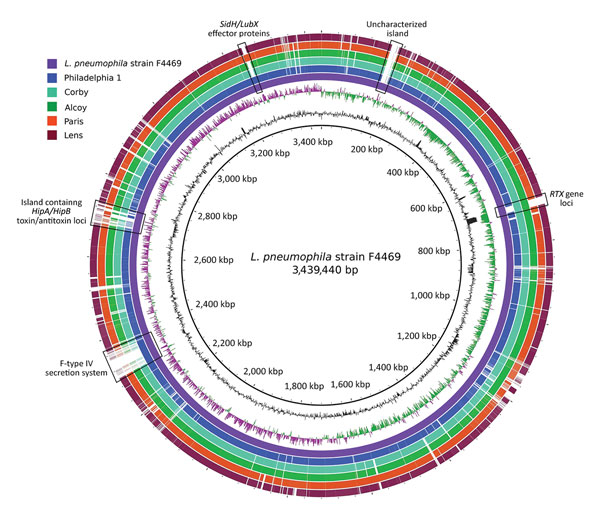Dear Diary,
Here is a biography on my microbe:
Legionella pneumophila is transmitted airborne via water droplets. There were 6,100 cases of Legionnaires’ disease reported in the year of 2016. The following symptoms show after two to 14 days after exposure: high fever, chills, coughing, muscle ache, headache, shortness of breath, and fatigue; symptoms typically take seven days to show. The CDC can analyze Legionnaires’ disease via chest x-rays, phlegm, blood, or urine. Those at risk are 65 or older, have weakened immune system, smoke, or have lung disease. Legionnaires’ disease is treated by 1 to 3 weeks on a drip or tablet antibiotic, majority of patients make a recovery. Health authorities must be notified if a case of Legionnaires’ disease is diagnosed to trace the source of the outbreak. Interesting enough, Legionella pneumophila is very common in rivers and ponds, but the numbers are low, it’s considered harmless.

Places/areas/surfaces L. pneumophila can be transmitted:
Water systems in hotels (Primary outbreak)
Legionnaires’ disease got its name in 1976 when the first outbreak affected 182 people attending the American Legion Convention hosted in Philadelphia; this outbreak killed 29 people. The outbreak’s source was the convention hotel’s air conditioning system, as well as contaminated water or mist.

Cruise ships (yup, in the middle of the ocean)
CDC reported during November 2003 through May 2004, eight cases of Legionnaires disease (LD) had a common factor and emphasized the need for identification and reporting of cases to facilitate the investigation.

Hospitals
Fourteen patients, three patients died due to other health conditions, after contracting Legionnaires’ disease in a UW Health hospital at the end of 2018 in Madison, Wisconsin. After the outbreak, the hospital eliminated the bacteria by clearing the hot water system with high levels of chlorine.

Grocery store mist machines
Louisiana had 34 patients diagnosed with Legionnaires’ Disease during October and November of 1989. Most patients shopped at a Winn-Dixie grocery store for roughly 30 minutes within ten days of onset symptoms. The patients were shopping for produce items near or at the mist machines. Researchers determined that aerosols from the mist machine were the cause of the outbreak, leading to thousands of grocery stores discontinuing produce mist machines.
Nursing home
Two patients in Richlandtown, PN living in a care center were infected with Legionnaires’ disease during January of 2019, one passing away due to other health factors. Another nursing facility was affected on April 22 of this year in Albert Lea, Minnesota. One of the residents at St. John’s Fountain Lake senior community has contracted Legionnaires’ disease at the facility; there have been five cases between June and August of summer 2018.
Also, pool or bath toys (throw the cute rubber ducky away), swimming pools (just in time for spring/summer), hot tubs (how romantic), whirlpools, cooling towers in air conditioning units, decorative fountains, and physical therapy equipment are known surfaces used to transmit Legionnaires’ disease.
Even Disneyland?!
Disneyland had a L. pneumophila outbreak during September of 2017. 9 of 12 patients experiencing symptoms visited Disneyland and the remaining three live or traveled to Anaheim, California; one of the patients has passed away. Orange County Health Care Agency stated the Legionnaire’s was discovered in late October. Disneyland had high levels of bacteria found in its two cooling towers; therefore, they were closed and sterilized and were shortly reopened.
References
Addmaster. “Ten Facts About Legionella.” Addmaster Additives for Industry, www.addmaster.co.uk/biomaster/bacteria-facts/ten-facts-about-legionella.
Ellison, Ayla. “3 Patients Die after Contracting Legionnaires’ Disease in Wisconsin Hospital: Fourteen Patients Contracted Legionnaires’ Disease during an Outbreak Linked to the Water System at UW Health’s University Hospital in Madison, Wis., and Three of Those Patients Have Died, According to the Wisconsin State Journal.” Becker’s Hospital Review, 18 Dec. 2018, www.beckershospitalreview.com/quality/3-patients-die-after-contracting-legionnaires-disease-in-wisconsin-hospital.html.
Legionnaires’ Disease News. “Albert Lea Nursing Facility Hit Again.” Legionnaires’ Disease News, 22 Apr. 2019, www.legionnairesdiseasenews.com/2019/04/albert-lea-nursing-facility-hit-again/.
Legionnaires’ Disease News. “First 2019 Outbreak Results in Death in Pennsylvania.” Legionnaires’ Disease News, 11 Jan. 2019, www.legionnairesdiseasenews.com/2019/01/first-2019-outbreak-results-death-pennsylvania/.
Live Science. “5 Things You Should Know About Legionnaires’ Disease.” LiveScience, Purch, 28 Aug. 2012, www.livescience.com/22760-5-things-you-should-know-about-legionnaires-disease.html.
Mahoney, F J, et al. “Communitywide Outbreak of Legionnaires’ Disease Associated with a Grocery Store Mist Machine.” The Journal of Infectious Diseases, U.S. National Library of Medicine, Apr. 1992, www.ncbi.nlm.nih.gov/pubmed/1552203.
Naham, Matt. “Disneyland Legionnaires’ Disease Outbreak: 5 Things to Know.” AJC, Cmgsharedcontent.com, 12 Nov. 2017, www.ajc.com/news/national/disneyland-legionnaires-disease-outbreak-things-know/zLqvS3pDryw25d8xKN1g0H/










